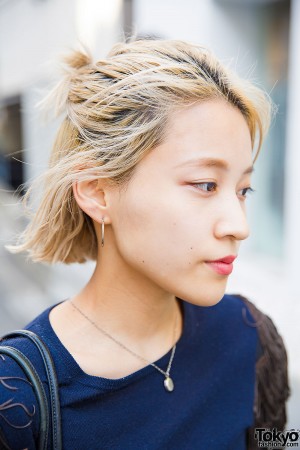

To claim this phenomenon as unrelated to Japan’s economic woes and changing employment structure is to ignore overwhelming evidence to the contrary. How can they possibly become salarymen and achieve the lifestyle emphasized by their parents and society? Faced with no alternate pathways, these men withdraw. When young men fail to succeed on an important exam or become victims of bullying, their sense of masculinity is shattered. Hikikomori can also be viewed as a response to an unattainable goal.

Phenomena like freeters, or under- and unemployed youth, and parasite singles, or unmarried young people, have manifested as some of the most obvious challenges to this order. Unfortunately, the “lost decade” of the 1990s, subsequent slow growth, and a variety of social changes have threatened this ideal. What we often think of as an archetypal American family structure-a nuclear family with a male breadwinner and stay-at-home mother-is considered the common unit of modern Japan. The salaryman ideal, where men work long hours in the office at the same company for life, became ubiquitous by the 1950s. As Japan entered an economic boom in the latter half of the 20th century, the economy transitioned from a low-tech industrial and agricultural economy to a high-tech industrial and service-based economy. Given these unique factors for affliction, hikikomori can then be viewed as emblematic of the psychological and social challenges adolescent males face in Japan and the increasing inability to join a traditional salaryman lifestyle. "The hikikomori problem is complex, drawing not only on Japan’s stagnant economy but also on engrained cultural values." Though the actual percentage may be lower, as parents are even less likely to report withdrawal for their daughters, many of whom are not expected to achieve the same educational or career goals as men and have a stronger claim to domesticity. In addition, hikikomori is not a gender-equivocal affliction: approximately 60 to 80 percent of sufferers are male. Though Saito Tamaki, one of the first psychiatrists to recognize this pattern of behavior as an epidemic, claims that hikikomori have been found in other places ranging from South Korea to Switzerland, the condition has been almost entirely uniquely Japanese. It’s even unknown how widespread the problem is: estimates range from 50,000 to 1,200,000, though most articles simply refer to the number as “untold.” This problem could significantly impact the already-shrinking Japanese labor force, leading government agencies to scramble for solutions. The Japanese government has yet to take concrete action on what’s become a national problem. Though virtually all subjects journalist Michael Zielenziger interviewed for his book Shutting Out the Sun told him they knew at least one person with the condition, parents often refused to seek help, the perceived stigma replicating the same cycle of isolation afflicting their children. The hikikomori epidemic has been a major, yet often unspoken cause of concern in Japan. Yet in spite of recent governmental efforts to address the phenomenon, it may take a shift in societal values to properly address its roots. These quasi-adults often become nocturnal, bathe rarely, hoard garbage, and lash out against their family members, often physically. This self-quarantine typically begins in late adolescence but can last indefinitely, sometimes lasting into an adulthood that never fully arrives.

Literally translated as “pulling in and retiring,” the word refers to a pattern of acute social withdrawal experienced by young Japanese men and women who confine themselves to their rooms, abandoning schoolwork and employment, leaving only to eat or not at all. Instead, his behavior is archetypal of a decades-old social phenomenon in Japan: hikikomori.
CURE FOR FREETER MANUAL
Jun didn’t have any disorders listed in the Diagnostic and Statistical Manual of Mental Disorders, like agoraphobia, schizophrenia, or even social anxiety. It would take over four years for him to emerge from this self-imposed exile. He began to sleep during the day and stay awake reading and watching television at night his parents would leave him meals outside his bedroom. Slowly, however, he turned to reading philosophy instead, abandoning his remedial classes and shutting himself up in the home he shared with his parents. Confidence shattered, he nonetheless spent six months studying hard to pass the test the following year. He had just failed the entrance examination for the national university where he had planned to study philosophy. Jun, an eighteen-year-old student from a Tokyo suburb, was in despair.


 0 kommentar(er)
0 kommentar(er)
